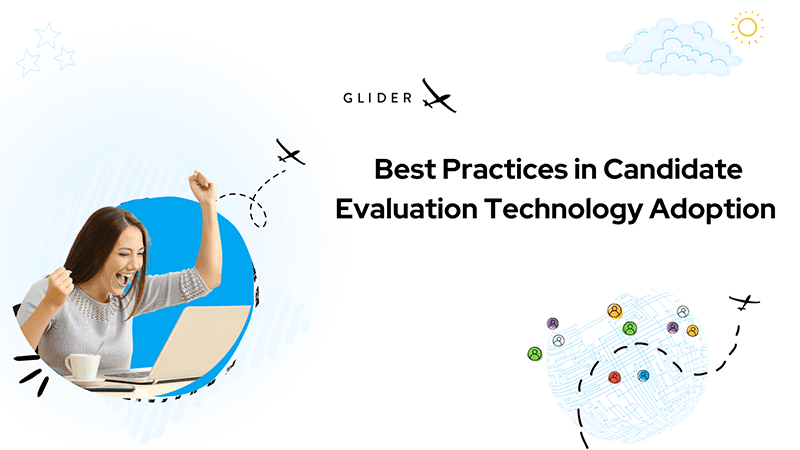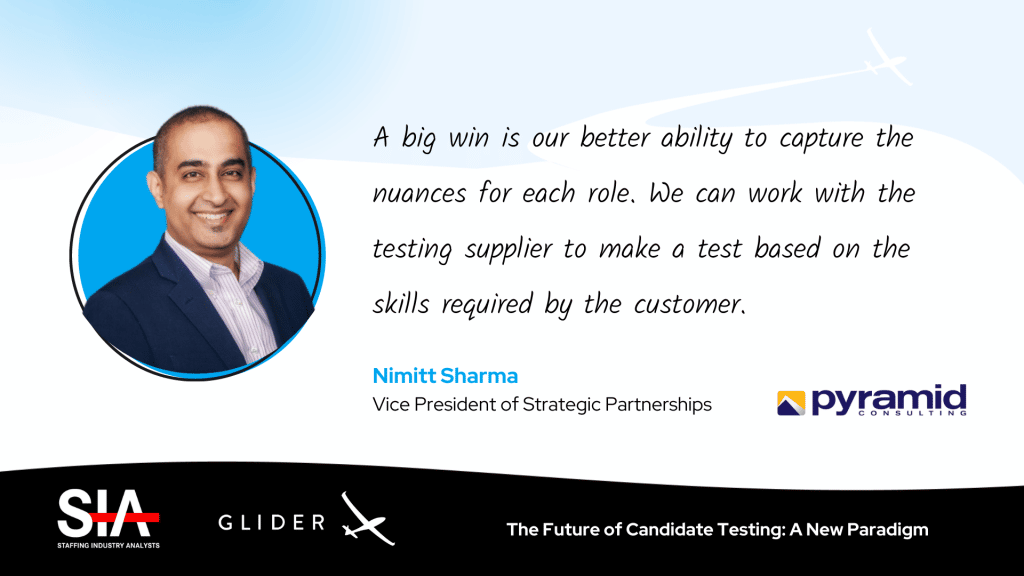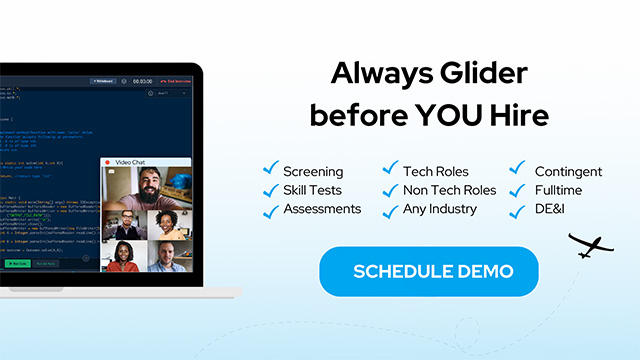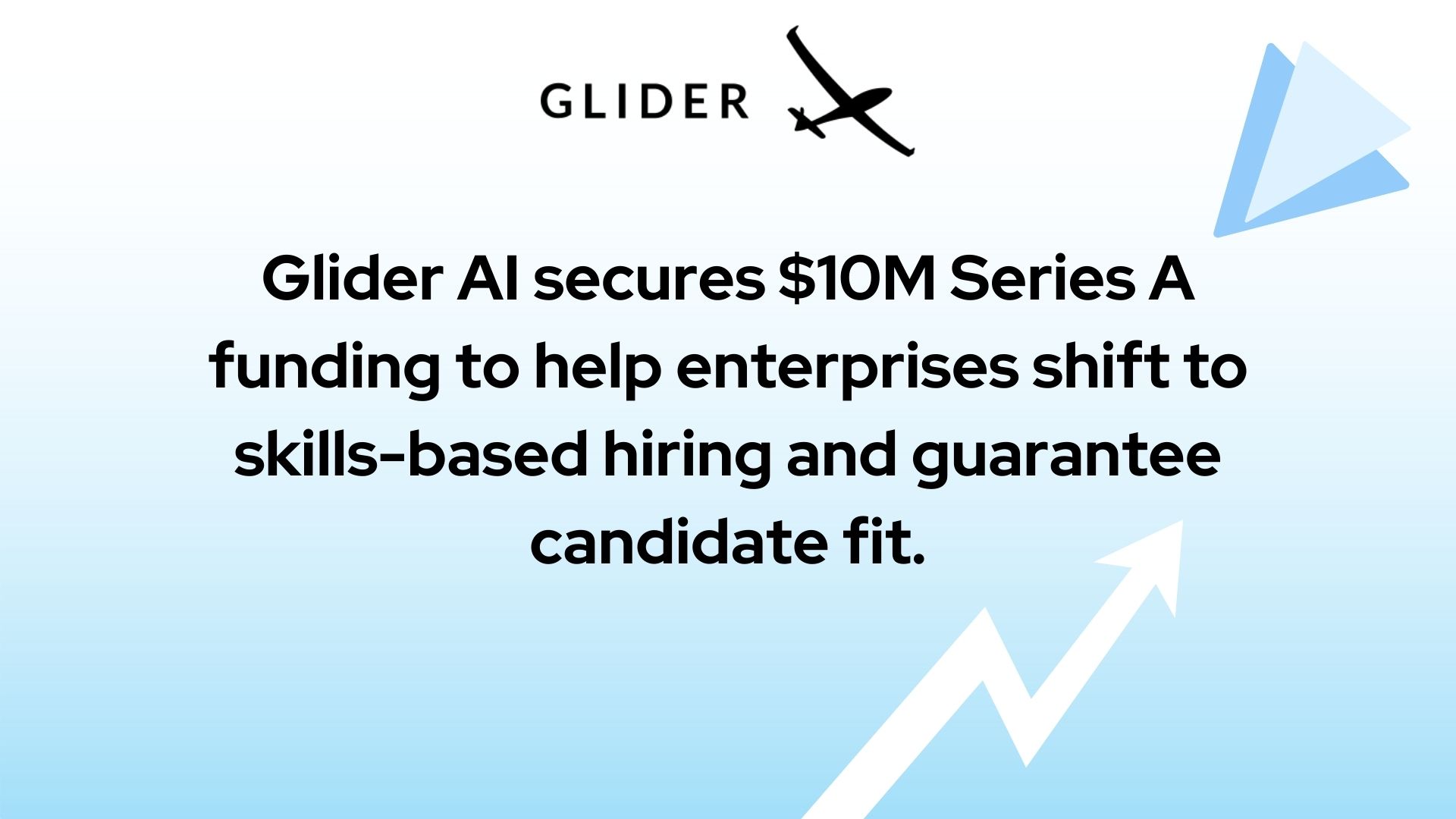
Recruitment and staffing industries invest tremendously in talent assessment practices. While every business enterprise competes with the best hiring methodologies to attract the best talent quality from the job market, they also fall short on certain assessment practices and data-driven technologies.
Our latest blog on best practices on candidate assessment technology gives a sneak peek into the hiring and staffing experts’ (leaders and followers) opinions on various elements needed to succeed in the current recruitment marketing climate.
As a first in the staffing industry, Glider has collaborated with SIA to spotlight various stakeholders’ views and priorities on tech-enabled candidate assessments. In addition, the research also demonstrates the organization’s readiness in imbibing AI-based recruitment technologies.
As stated in the research, the following are the list of top priority actions to improve the quality of technical candidate testing and evaluation capabilities:

The list consists of those areas that need to improve in terms of avoiding assessment frauds and malpractices by candidates. At the same time, those actions that are appealing to candidates as well:
This question explicitly demonstrates the organization’s capability or readiness in terms of test realism and fraud detection. Accordingly, the following practices emerged as a priority:
As a no surprise, executive leaders demonstrated an upper hand across all sets of priorities, from improving assessments to fraud detection to organizational readiness.
However, both stakeholders had a unison response that they need to improve in AI-based online proctoring systems. Nevertheless, considering the current recruitment scenario, AI has a greater potential within the next few years.
“One way to attract great candidates to open job roles is by creating landing pages for them. Typically, when you have a new job you are hiring for, you create the post via your recruiting software and that is the main “marketing material” to promote it. Instead, you can also create a page on your site that has a more robust interface and information.
Michael Alexis, CEO of TeamBuilding
For example, we create pages that have a fill-in the blank format that customizes the page to include the applicant’s name in fun ways, and also includes numerous links, videos and other info that will help people learn about us. The goal is the make the process a little fun, and we often get feedback from applicants such as “this was the most fun I ever had applying for a job!”
We have often heard the claim that technology changes at the pace of light speed. It is true to candidate assessments as well. In fact, many recruitment experts’ term ‘recent technology’ as an oxymoron. That’s because candidate assessment tests as recent as 12 months old are becoming obsolete. As a result, recruiters are presented with challenges, considering the research, cost, and resources invested in their development and maintenance.
Besides, hiring strategies also need to imbibe contemporary issues like DE&I, minority inclusion, and others. Many studies have voiced in unison that the more diverse the talent is, the more successful the workplace will be in the future. Also, companies with ethnically and racially diverse teams fetch higher financial returns compared to otherwise.
Not only that, in of the SIA reports, out of two-thirds of the executives surveyed, a majority of 63 percent said that DE&I is one of the key priorities in the current hiring climate. But considering the lack of explicit discussions on these matters till now, the tech hiring industry has taken up the challenge to provide opportunities to be well-deserved.
Finally, yet importantly given the “plug and play” nature of testing, organizations must be equipped with the right technologies for data creation and traction. Only then, they can achieve faster time-to-hire and time-to-fill goals.
2022 has arrived. We certainly hope the year is full of health, happiness, and positivity. We are also eager to get you a lot of updates on the recruitment and staffing industry. Subscribe to Glider’s Newsletter and never miss an update!
Also, you are just a click away from early access to the latest SIA report!



